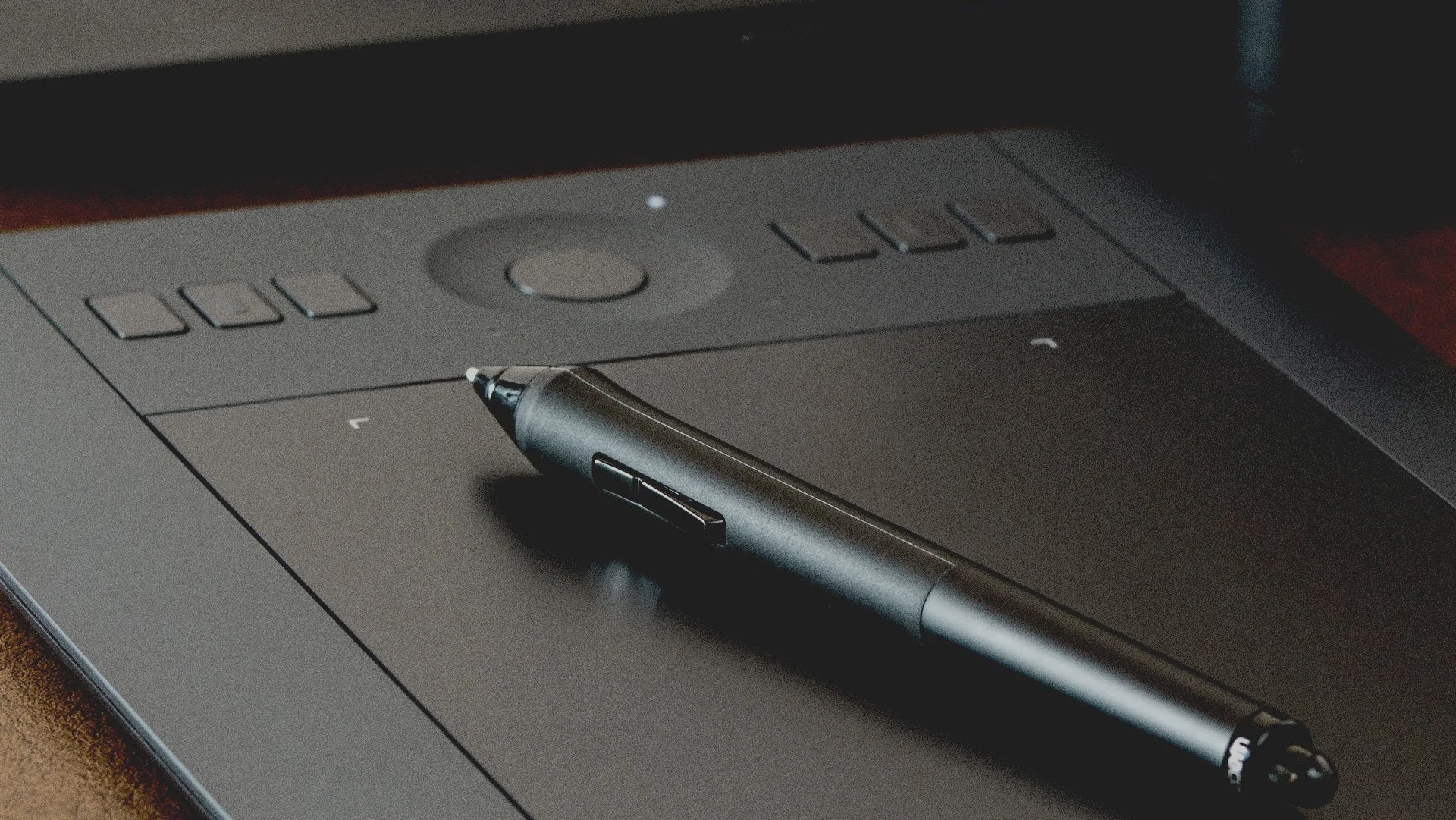Designing Memorable Characters —
My Strategies for Effective Client Collaboration
Concept Art Project Summary
-
Many Notes is not just another video game. It is a unique narrative-driven experience that delves into the psychological complexities of two young girls stranded on a California beach. Their mysterious deaths lead to an even more enigmatic rebirth, as they are transferred into an AI to relive their last day on Earth repeatedly, all while being tested for their sentience by a group of ominous scientists.
In early 2025, River Gandour, a solo entrepreneur and indie game developer, embarked on a new challenge: to create a memorable narrative-packed adventure that would captivate players with its mystery, thought-provoking questions, and rich characters. He understood that the key to achieving this lay in designing the right characters. The main character designs in the story were not just participants but visual storytellers who would enhance the game's narrative.
Services Provided
-
Character Design
IP Development
Creative Consulting
The Mission
with our Character Concept Art
River aimed to create character designs that would deepen the existing story by exploring depth psychology and making narrative-driven artistic decisions—ultimately elevating the game’s emotional and visual impact. The visuals would play a crucial role in this process, as characters serve as a foundation for players to forge meaningful connections.
Designing resonating characters that align with the story is just as essential as any other core aspect of compelling protagonist character design. From Hercules and Perseus to Darth Vader and Mad Max, iconic characters follow their stories by integrating graphic symbols, shapes, colors, and motifs that reflect their essence. This library of graphic elements creates a visual language that communicates the intended message without words. When used effectively, these elements elicit emotional reactions from players, drawing them deeper into the narrative. Yet, despite these goals, defining a clear path to achieving such impactful designs remained a challenge.
River struggled to find what he needed through AI generators or concept artists who focused more on illustrative aspects of the project. In late 2024, River employed Miguel, a Concept Artist focusing on Character Design, to assist on this.
While Miguel’s concept art had an emotional tone aligned with River’s vision from the getgo, the challenge remained: how could they delve deeper into the initial emotions? How could they extend beyond the concept art aesthetics, which might resonate with some but were based on mere gut instincts?
The history of the game and its characters—Charlie, Callie, and Fiend—had been complicated. Miguel offered clarity by suggesting various tools to assist in exploring these ideas. After attentively listening to River’s needs, Miguel proposed that the best approach at this project stage would involve several rounds of discovery. They would map River’s feelings to his thoughts, question their rationale, and seek patterns.
This process resembled a therapy session, where the emotional ambiance regarding the characters must be transformed into specific details. River was eager and inspired to begin, and so we collaborated on the discovery process with the following premise:
Understand the problem first.
Diagnose.
Then, prescribe and test a solution through sketches.
Just as having characters that fit the story is crucial, the details of their design must be carefully considered. If the visual representation of the character is well done, then the old saying of “don’t judge a book by its cover” will not apply here. If we are intentional, using the correct symbols, shapes and colors, we will ensure that players engage meaningfully with the narrative and character design.
The correct elements can evoke the desired reactions from people and enhance their enjoyment of the story.
We quickly decided we didn’t want to go through countless drawing iterations, hoping to reach a satisfactory result eventually. Instead, we chose to define the characters first. Think of a friend who would introduce you to another friend who is about to arrive and join both of you, in this introduction, the idea you get in your head about this mysterious figure, will match 1:1 with looks, attitude, spirit and soul, we are looking for logical and impactful appearance here.
How we Strategized
for Memorable Characters
Miguel utilized an OKR (Objectives and Key Results) framework during production. We crafted a clear statement outlining our goals and listed several conditions necessary to achieve those goals. One of Miguel’s early character development ideas was using Persona Profiles. He pointed out that companies like Apple and Microsoft use these profiles to analyze the market. For instance, before launching the iPod, they would create fictional personas to determine whether there were potential users for the product.
They would describe who these personas are, their habits, preferences, dislikes, and especially their needs. Miguel suggested this would be a good gateway to define the character designs.
River was captivated by this approach. Defining character psychology first and employing unconventional tools in concept art felt like a risky strategy but one that resonated well with us. After all, if it was good enough for Apple, it would also work for Many Notes.
How we Collaborated
and Designed Efficiently
All of these tools were designed to allow River to communicate effectively. Although he might not fully understand terms like “art direction” and “mood boards,” Miguel facilitated the process, ensuring River's ideas were translated through these devices (mood boards, mind maps, discovery tools) and ultimately into game character design. River frequently felt excited about the process and the references before him. Since we didn't have a strict script, we could develop the intellectual property along with the characters in real-time. Using mind maps, we could identify unexpected connections between a character's appearance and their psychological traits from a broader perspective. Like an eagle, who flies above all and sees all before they make the leap, so did we lay the character’s psychology before we considered to start drawing.
It was a special treat for Miguel when River exclaimed, "God damn, we are nailing this character!" Remarkably, we were still in the reference-gathering phase and hadn't started drawing yet. This experience highlighted the power of discovery, active listening, and the strategic planning that underpins our every move, instilling confidence and inspiration in our project's direction. Rather than interpreting our mission on the surface, we took a deep dive to understand what makes inspiring character designs that people can’t forget.
Because the client isn’t a designer, we had to be careful about how we defined each keyword for them.
Everyone interprets terms like "vulnerable" or "feminine" differently. It was essential to be designing what River had in mind when he thought of those for the characters, and so we filtered the visuals to communicate those effectively.
We engaged in enough back-and-forth communication for River to be educated about terminology when necessary while ensuring that Miguel was informed about the project simultaneously. This collaborative approach helped align the visions for the game characters and to stay inspired throughout the process.
The second and third character designs proved to be more challenging. We needed additional research and more precise definitions for the keywords. This was evident in the first round of sketches for Callie (the one above); while it was a good start, it wasn't fully aligned with what River wanted to express with the character concept art, the keywords had not been fully dissected for what they meant. This prompted Miguel to re-evaluate the direction we needed to take and find further character design inspiration.
Miguel adjusted his approach and asked a few more questions about the character and came up with different tools for the discovery process. After gathering more data, he could diagnose the issues and only then began sketching.
The traditional mind maps, had become insufficient for this project. Instead, Miguel created a mix of a mind map with a mood board, drawing on his foundational knowledge of Design Thinking but also Freudian, Adlerian, and Jungian psychology.

Past Clients:
Tools are designed for us to use, not for us to be used by them. Sometimes, we set aside a mind map, only to revisit it later if it proves helpful in solving a given design problem. The process is collaborative, creative, and dynamic. Sometimes, we only need to touch on a character's psychology, while other instances require a deeper exploration. However, the intention is always the same: to map out the problem, isolate it, and implement the necessary solutions.
Some keywords make the connections more pronounced, while others may require more digging. Ultimately, we aim to reach a shared understanding of concepts like “vulnerable” or “feminine” or any other keywords that may mean different things to different people.
The tools we use to adapt to our needs—sometimes we achieve alignment right away, and other times it takes longer. Whether we utilize a mind map or engage in a conversation with a few questions, our goal is to agree on how to proceed, strategize, and then begin to create. As Benjamin Franklin said, if you aren’t planning, then you’re planning to fail.
The Payoff of Effective Communication between Client and Concept Artist
River actively listened to Miguel's ideas, acting as a filter for them. It was like playing a game of "Guess Who?" Miguel would pay attention to River's responses, looking for patterns. When River repeated certain words or showed unique body language, Miguel would ask about it: "I've noticed you mentioning XYZ often, which means it is important—what does XYZ mean to you?" or "If we add ABC to our character, would that represent that aspect well?"
This approach moved the focus away from personal preferences, prioritizing the project's needs instead. Active listening proved invaluable. For instance, River realized he liked two different character designs for the Fiend, each for different reasons. He considered using both in different story chapters. However, Miguel pointed out the high production costs of this approach. They found a solution by removing the Fiend's shades in a later chapter, and having a full face reveal and thus having it feel like a different character had entered the scene along with its new depth, this felt like two character designs in one, allowing for more character depth while keeping costs down.
Many in the industry believe thorough research and planning are too expensive, they rather jump into drawing thumbnails of countless iterations and hope to arrive in one good idea. However, in this case, it saved time, emotional energy and money. The result was character designs that truly fit the project, not just designs that felt good. These characters connected authentically with the narrative, enhancing emotional moments. This process established a new standard for collaboration based on mutual trust and respect. The client became central to the project, with the designer acting as a facilitator. The goal shifted from creating something that provoked a “Oh, looks great!” reaction to achieving an "Of course, that's it!" moment—a design that we knew it was absolutely right for the story, rather than one we felt was right.
-
Copyright: Many Notes, video-game. River Gandour.
Creative, Art Direction and Concept Art by Miguel Nogueira.
Be part of the creative journey.
Hire a Concept Artist for your Project!
Are you looking for a collaborative design process that prioritizes your project's needs and delivers authentic results? Let's work together on a strategy to bring your visions to life. Contact today to discuss your project and discover new horizons of what we can achieve together.
“If you want to go fast, go alone. If you want to go far, go together” — Ancient African proverb.
Join the Mentorship Program!
Interested in elevating your collaborative skills with clients, or maybe improve leading skills with your team? I offer mentorship programs designed to help you refine your approach to character design, communication, and project alignment. Let's connect and explore how you can create designs that resonate on a deeper level and become a valuable facilitator for your clients' visions.
“Two heads think better than one... especially when one has a map”












